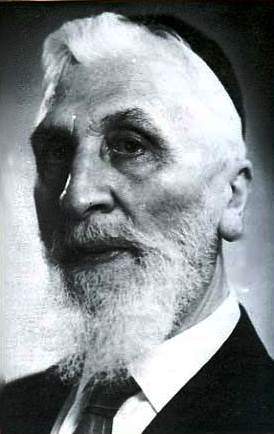
The Romaniote Jews or the Romaniotes are a Greek-speaking ethnic Jewish community native to the Eastern Mediterranean. They are one of the oldest Jewish communities in existence and the oldest Jewish community in Europe. The Romaniotes have been, and remain, historically distinct from the Sephardim, some of whom settled in Ottoman Greece after the expulsion of Jews from Spain and Portugal after 1492.

SephardicJews, also known as Sephardi Jews or Sephardim, and rarely as Iberian Peninsular Jews, are a Jewish diaspora population associated with the Iberian Peninsula. The term, which is derived from the Hebrew Sepharad, can also refer to the Jews of the Middle East and North Africa, who were also heavily influenced by Sephardic law and customs. Many Iberian Jewish exiled families also later sought refuge in those Jewish communities, resulting in ethnic and cultural integration with those communities over the span of many centuries.
Sephardic music is an umbrella term used to refer to the music of the Sephardic Jewish community. Sephardic Jews have a diverse repertoire the origins of which center primarily around the Mediterranean basin. In the secular tradition, material is usually sung in dialects of Judeo-Spanish, though other languages including Hebrew, Turkish, Greek, and other local languages of the Sephardic diaspora are widely used. Sephardim maintain geographically unique liturgical and para-liturgical traditions.
Mizrahi Jews, also known as Mizrahim (מִזְרָחִים) or Mizrachi (מִזְרָחִי) and alternatively referred to as Oriental Jews or Edot HaMizrach, are a grouping of Jewish communities comprising those who remained in the Land of Israel and those who existed in diaspora throughout and around the Middle East and North Africa (MENA) from biblical times into the modern era.
Arab Jews is a term for Jews living in or originating from the Arab world. The term is politically contested, often by Zionists or by Jews with roots in the Arab world who prefer to be identified as Mizrahi Jews. Many left or were expelled from Arab countries in the decades following the founding of Israel in 1948, and took up residence in Israel, Western Europe, the United States and Latin America.

The history of the Jews in Turkey covers the 2400 years that Jews have lived in what is now Turkey.

Syrian Jews are Jews who lived in the region of the modern state of Syria, and their descendants born outside Syria. Syrian Jews derive their origin from two groups: from the Jews who inhabited the region of today's Syria from ancient times, and they're classified as Mizrahi Jews. Mizrahi is a generic term for the Jews with an extended history in Western Asia or North Africa); and from the Sephardi Jews who fled to Syria after the Alhambra Decree forced the expulsion of the Jews from Spain in 1492.

Sephardic Jewish cuisine is an assortment of cooking traditions that developed among the Sephardi Jews.
Musta'arabi Jews were the Arabic-speaking Jews, largely Mizrahi Jews and Maghrebi Jews, who lived in the Middle East and North Africa prior to the arrival and integration of Ladino-speaking Sephardi Jews of the Iberian Peninsula, following their expulsion from Spain in 1492. Following their expulsion, Sephardi Jewish exiles moved into the Middle East and North Africa, and settled among the Musta'arabi.

Island of Roses: The Jews of Rhodes in Los Angeles is a 1995 documentary about the dying Sephardic community in Los Angeles. The film shares interviews with some of the last surviving immigrants, who offer nostalgic memories of their lost home, and explores how the once vibrant community of Rhodes Jews in Los Angeles now struggles to preserve its traditions as younger, assimilated generations have to make a conscious effort to maintain the practices of their ancestors.

Trees Cry for Rain: A Sephardic Journey is a short documentary film by American documentary filmmaker Bonnie Burt that follows "America's Internet Champion of Ladino" Rachel Amado Bortnick, as she explores her Jewish-Turkish heritage and the vanishing world of Sephardic culture and the Ladino language. The film was officially released in 1989, but drew public attention in 1992 with screenings at a number of Jewish film festivals worldwide, including the San Francisco Jewish Film Festival and the Madrid "Festival de Cine Judio" which was dubbed "the biggest Jewish cultural event held in Spain in 500 years". This was followed by a public screening at the Lincoln Center for the Performing Arts in New York, and airing on The Jewish Channel.

Jews comprise approximately 9% of New York City's population, making the Jewish community the largest in the world outside of Israel. As of 2016, 1.1 million Jews lived in the five boroughs of New York City, and over 1.75 million Jews lived in New York State overall.

Sephardic Bikur Holim Congregation (SBH) is an Orthodox Jewish congregation and synagogue in the Seward Park neighborhood of Seattle, Washington, in the United States, that practices in the Sephardic tradition.
David Fintz Altabé (1929–2008), was an internationally known scholar and poet specializing in Judeo-Spanish literature and Sephardic culture. He served twice as President of the American Society of Sephardic Studies as well as Vice-President of the American Association of Jewish Friends of Turkey. He also was on the Sephardic Council of Overseers and taught Spanish at the City University of New York where he was honored as professor emeritus.
Sephardic Bnei Anusim is a modern term which is used to define the contemporary Christian descendants of an estimated quarter of a million 15th-century Sephardic Jews who were coerced or forced to convert to Catholicism during the 14th and 15th century in Spain and Portugal. The vast majority of conversos remained in Spain and Portugal, and their descendants, who number in the millions, live in both of these countries. The small minority of conversos who did emigrate normally chose to emigrate to destinations where Sephardic communities already existed, particularly to the Ottoman Empire and North Africa, but also to more tolerant cities in Europe, where many of them immediately reverted to Judaism. In theory, very few of them would have traveled to Latin America with colonial expeditions, as only those Spaniards who could certify that they had no recent Muslim or Jewish ancestry were supposed to be allowed to travel to the New World. Recent genetic studies suggest that the Sephardic ancestry present in Latin American populations arrived at the same time as the initial colonization, which suggests that significant numbers of recent converts were able to travel to the new world and contribute to the gene pool of modern Latin American populations despite an official prohibition on them doing so. In addition, later arriving Spanish immigrants would have themselves contributed additional converso ancestry in some parts of Latin America.
North African Sephardim are a distinct sub-group of Sephardi Jews, who descend from exiled Iberian Jewish families of the late 15th century and North African Maghrebi Jewish communities.
Eastern Sephardim are a distinctive sub-group of Sephardic Jews mostly descended from Jewish families which were exiled from Iberia in the 15th century, following the Alhambra Decree of 1492 in Spain and a similar decree in Portugal five years later. This branch of descendants of Iberian Jews settled across the Eastern Mediterranean.

Sarah Abrevaya Stein is a prominent American historian of Sephardic and Mediterranean Jewries.
Elie Abadie is the Senior Rabbi of the Jewish Council of the Emirates in the United Arab Emirates. Abadie is also the former Director of the Jacob E. Safra Institute of Sephardic Studies at Yeshiva University, with an area of interest on the topics of Sephardic Judaism, history, philosophy, and comparative traditional law. He is a member of the board of the American Sephardi Federation and the World Sephardic Educational Center, and co-president of Justice for Jews from Arab Countries. He is a former member of the Board and an Officer of the Rabbinical Council of America (RCA), the Treasurer/Vice-president of the New York Board of Rabbis, and co-chair of the Sadat Congressional Gold Medal Committee.

Isaac Abraham Alcalay was a Bulgarian-born Jew who served as Chief Rabbi of Serbia and Yugoslavia as well as a leading of American Sephardic Jews.











